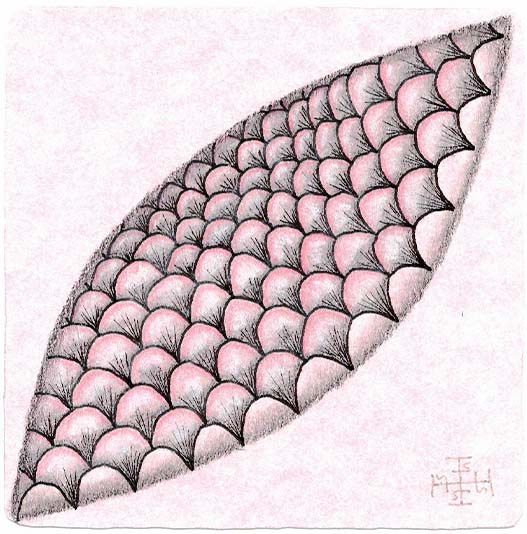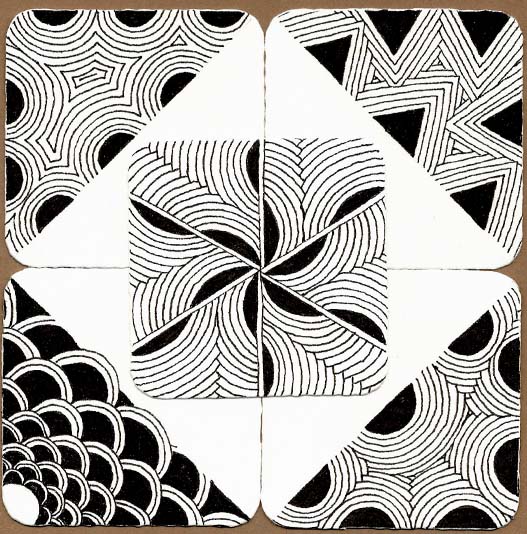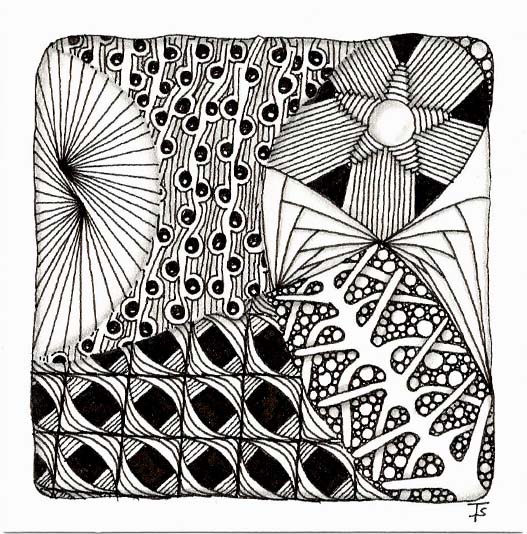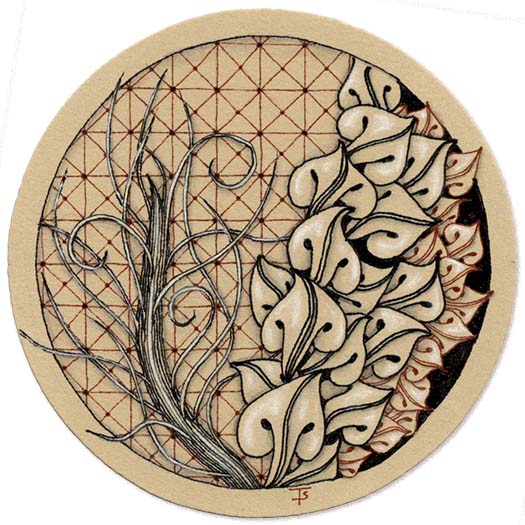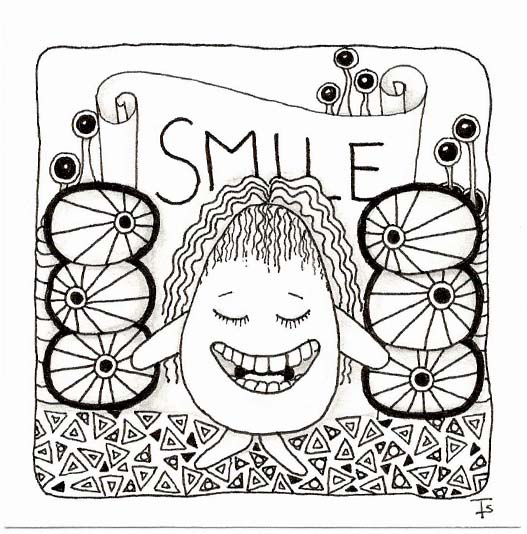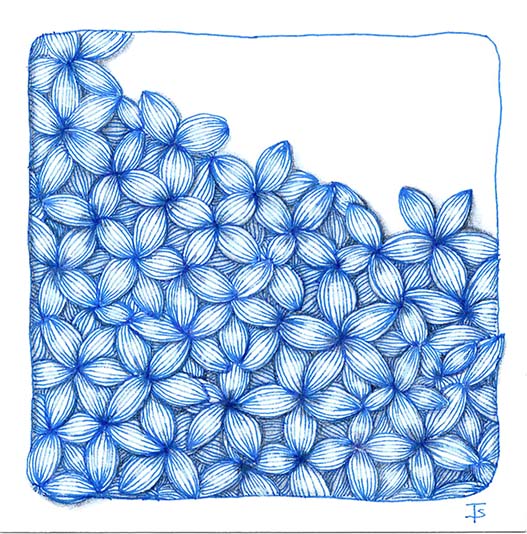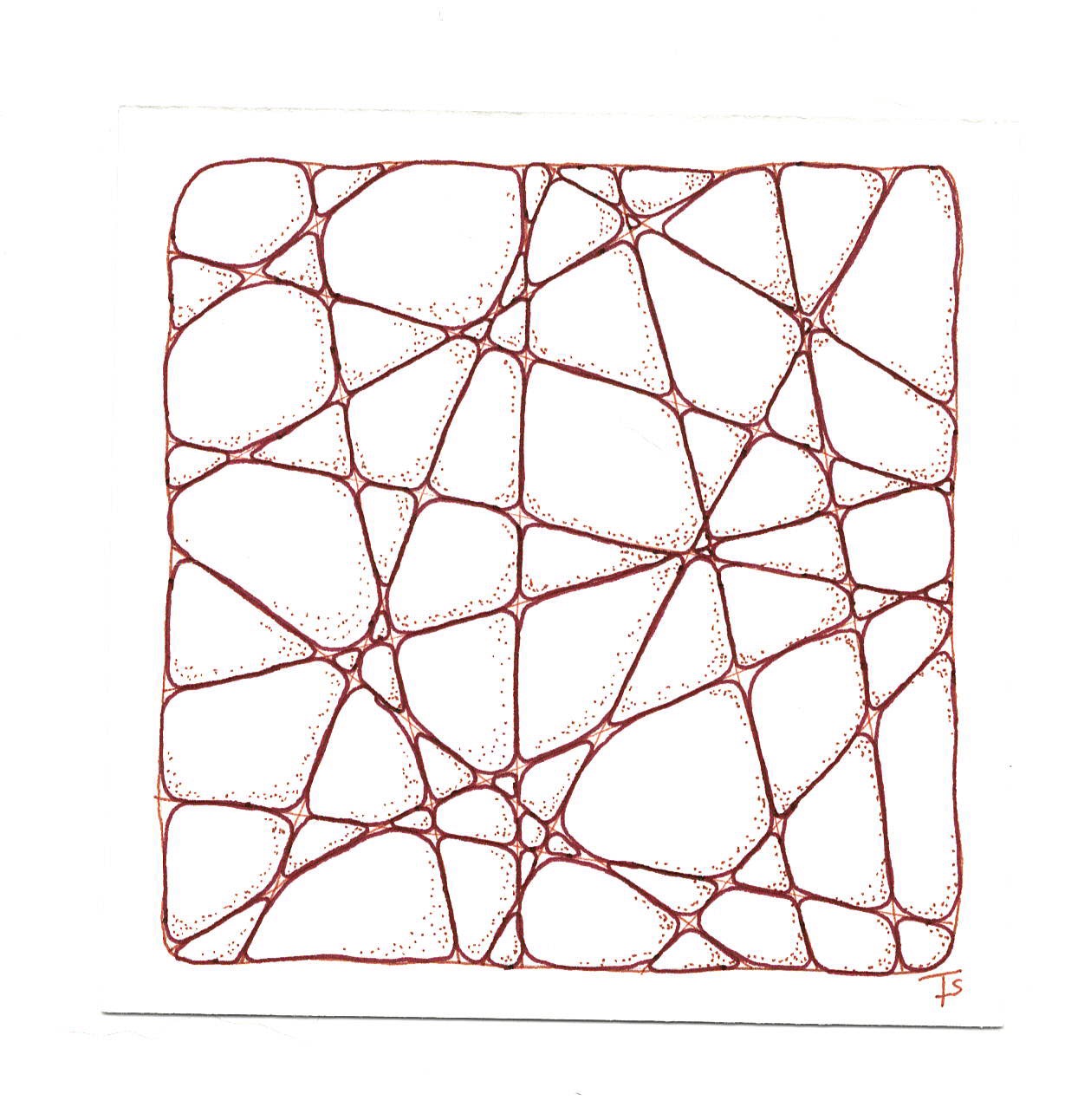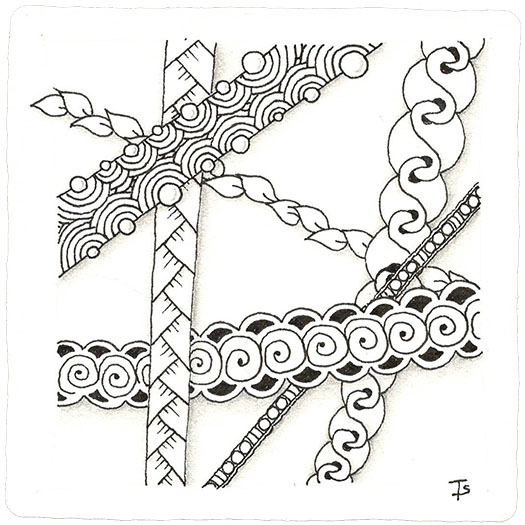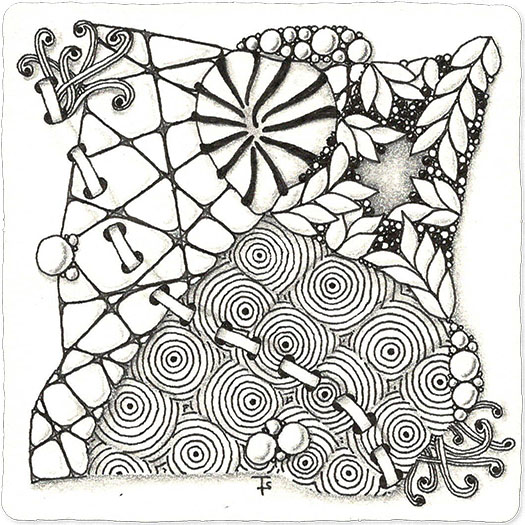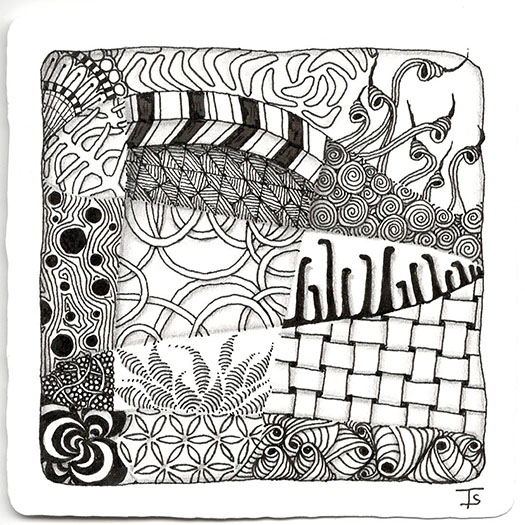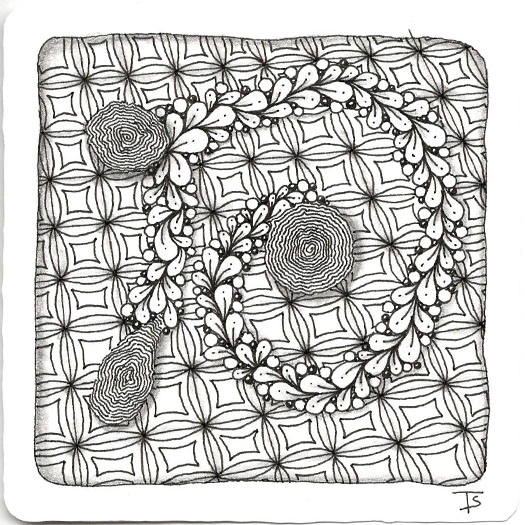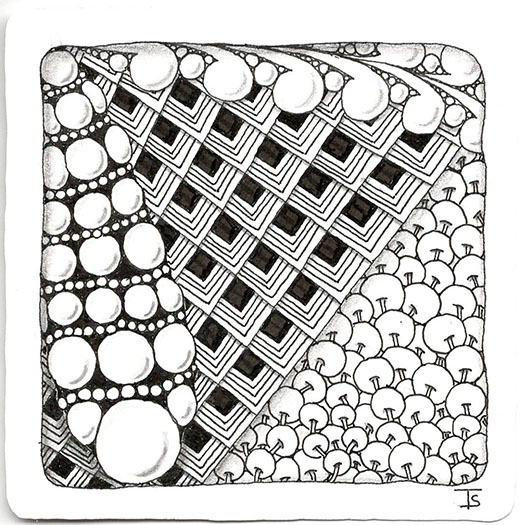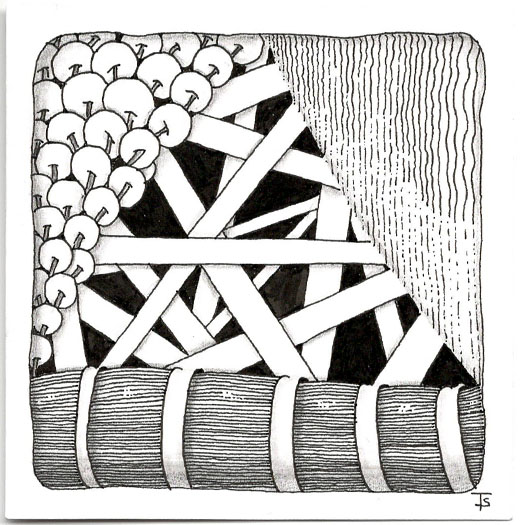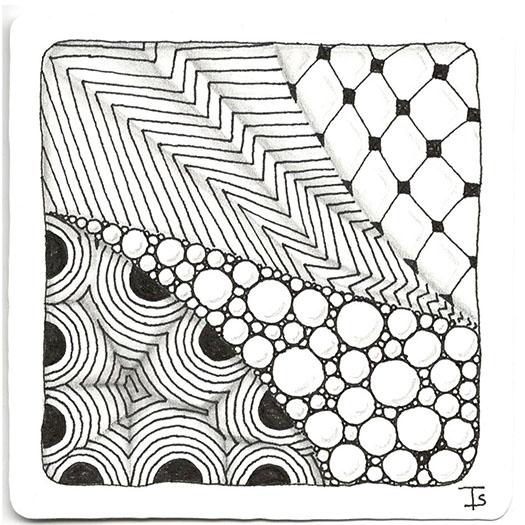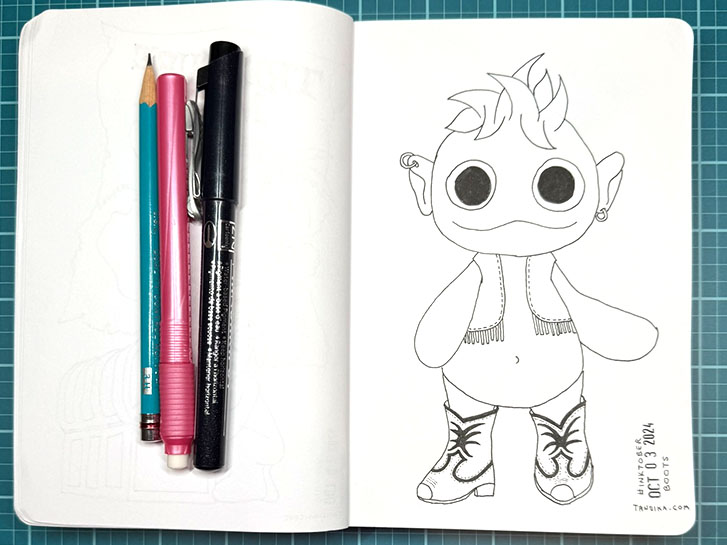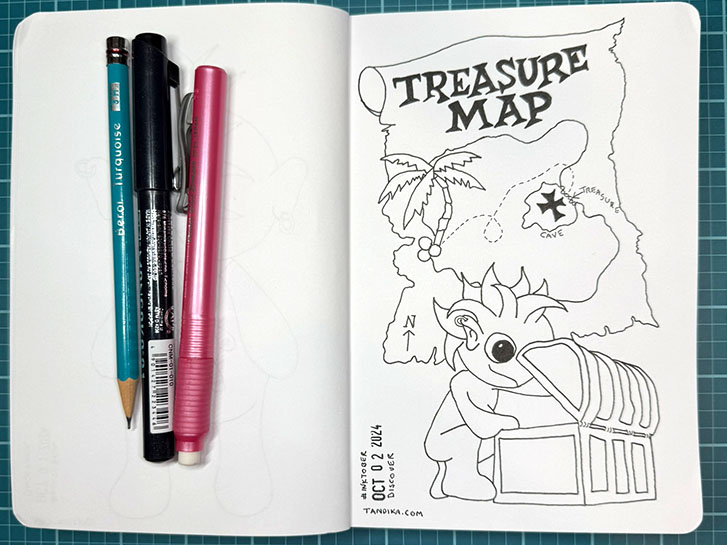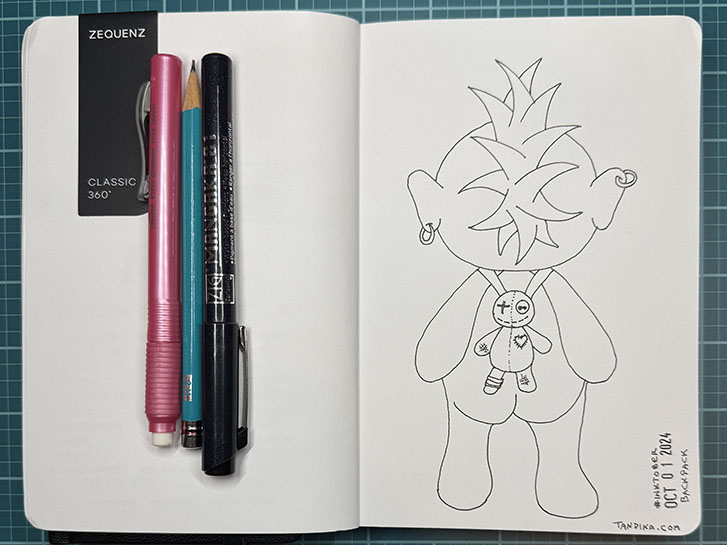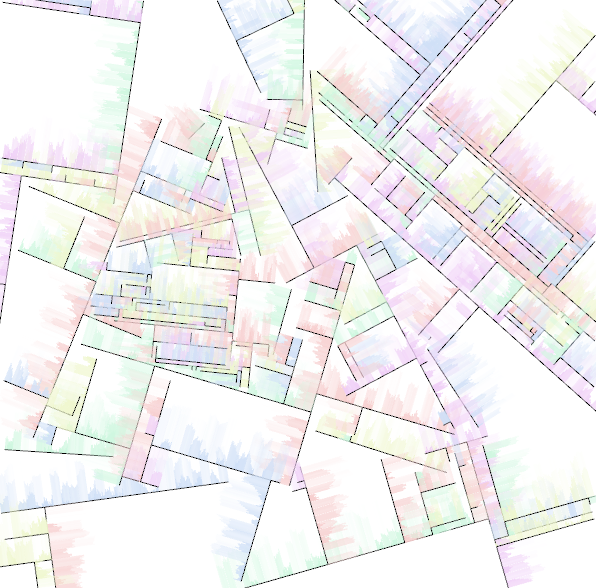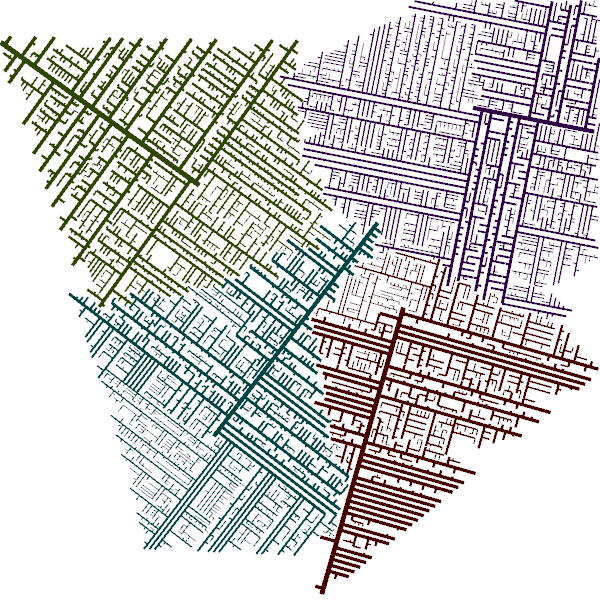May is Mental Health Awareness Month. This year, the theme, as designated by Mental Health America is “Turn Awareness Into Action.” This encompasses taking action for yourself and taking action for all.
Zentangle is a tool for taking action for yourself AND for taking action for others. For myself, it helps me to deal with the stresses in my life. I also teach others, giving them new tools to deal with things in their lives.
Variation is what makes life interesting. Variation on a theme makes tangling interesting!
The four tiles making up the outside square are all tangled with a variation of Crescent Moon. It was very relaxing to create each one, adding it to the mosaic as I went along.
The center tile tangle is called Ixorus. I chose it because it also has the “moon” shapes, but is omnidirectional.
There is no shading at all on these. I wanted to keep the overall design very graphic.
The Zentangle method can produce everything from romantic, flowing botanical designs to bold graphic statements…and everything between.
My general, meditative style often leans towards strong graphics. I also tend to be a bit timid with the shading, although it is bolder than you see here. Scanning and reducing the size seems to reduce the overall range.
The string for this tile came from a bunch that I have collected and numbered over the years. I often just use a random number generator to choose one and then fill it with random tangles. I never ceases to surprise me what I end up with.
I don’t often work on Zendala tiles. For some reason, they seem kind of intimidating to me. I do have many blank tiles in my stash that are just sitting there, being ignored.
I am also interested in trying my hand at more botanical tangles and trying things that I haven’t done before.
This tile is a result of all of this! As I was doing it, at times I thought it wasn’t going to work, and liking various parts, and thinking I would just put it away and not finish it.
Time for a bit of fun… The kid got her braces removed on Tuesday.
I posted a spread in a tiny art journal a little over a year ago. The spread was actually created in 2023.
Having braces for 2 years isn’t fun. But the payoff is really worth it!
Since I’ve been tangling evey day, I decided to create an illustration tile, using tangles to create a picture that is less abstract than normal. I wanted to capture the feeling of going to school and showing off her new smile to all of her friends and classmates.
Another monotangle day.
This one is more complex than yesterday’s tile. I was sorting through my old Micron pens to see what worked, and what didn’t. I found a blue, 01 pen and decided I would use that for today’s tangling.
I didn’t want to shade the tile using a regular lead pencil, so I chose a darker blue colored pencil. I really like the effect it created!
I also added highlights to the top layer of petals, just to make them pop out even more.
Crazy Nzepple is another tangle that I love to draw. There is just something very soothing about smooshing orbs into a defined shape!
Zentangle drawn on Strathmore Vellum Bristol using brown and sepia Micron pens. Shading done with pen stippling.
I chose not to add any pencil shading to this tile because I love the simplicity and graphic quality of the basic drawing.
#zentangle #monotangle #tile #drawing #tangle
Tangles: Crazy Nzepple
I used another tile from my kit that already had a string drawn on it. This time, it divided the tile into rectangular-ish sections.
Instead of filling in the sections themselves, I decided to use the dividing lines and draw in a Hollibaugh fashion.
I was wondering what it would look like if I used random ribbon-style tangles instead of the more traditional empty ribbons. I think the results are interesting and I will probably try something like this again in the future!
I mentioned previously that I had a very old Zentangle kit. I also have a newer one that has the lighter green color on the outside. I pulled it out because I wanted to see what was in it and I found a standard Zentangle tile that already had a string drawn on it! Actually there are a few with strings already drawn on them.
I chose this one to work on. The string was fairly complex, so I thought it might be fun. The string had several small loops around the outside edge, so I started drawing orbs and basically filled them in with Tipple.
On Wednesday, I decided to tangle a tile with whatever I felt like. Crazy Huggins is one of my favorite tangles. If you look through the Zentangle Gallery here, or click on Crazy Huggins in the tangle list at the bottom of the right side, you can see how many times I’ve done this tangle as a kind of “string”, and then filled in the centers with other tangles!
The random string that came up for day five of my “back to basics” journey is, well, complicated! I decided to treat this like a patchwork quilt. I figured it would give me the opportunity to practice many differeent tangles, all chosen at random. Perhaps too many!
This tile has 16 different tangles, two of which are new to me: Moon Pie and Floo-ish. I really love that last one! Choosing all the tangles before I started drawing allowed me to arrange the locations for each so that the composition had a balance that I liked.
Day four of going back to basics with my Zentangle practice. For this tile, I chose a string at random from the instruction booklet, and random tangles from the Legend card and the back of the booklet.
While I enjoyed creating the tile, and it worked great for the reasons I tangle, I am not as excited with the end results. I loved the Cogwheels and the Flux ribbon, but when I added the background, it did nothing to enhance them. It isn’t enough contrast, and distracts from the other tangles.
Day three of my back to basics journey along the Zentangle path! Today, I continued following the instructions in the little booklet in my kit. I randomly selected a string from those shown. It was a triangular shape in the middle of the tile, with three other triangles around it to make up the square.
I don’t have the die that belongs in the kit any more, so I just used a random number generator on my phone to select tangles from the Legend Card in the kit. Just by chance, I got three different tangles with rounded designs and a single, angular grid design! The combination worked out perfectly for this string!
Yesterday, I talked about going back to basics with a restart of my Zentangle practice.
Today, I’m showing you the second tile, which I did yesterday. Again, I followed the instructions in the booklet included in my original kit. The only change I made was to color in the background, in the section containing the Hollibaugh tangle, giving the design stronger contrast.
#drawing #tile #zentangle
Zentangle drawn on Strathmore Vellum Bristol using a black, Micron pen. Shading done with graphite pencil.
I am home!
I know that sounds a bit odd, but if you had my life since the beginning of the Covid pandemic, you would understand. The last original tile I posted was May 26, 2020. Certainly a long time ago!
Since then, I’ve moved 4 times. My stuff has been in and out of storage in three different cities, and I now have a teenager and a pet!
As I was poking around the Internet the other day, I ran across Jared S Tarbell's Gallery of Computation . I was really impressed with what he had done, especially since a few of his ideas were exactly where I was trying to go! I believe I had seen something about his Sand Stroke a few years back, and liked the effect. My Watercolor Stroke is the same basic idea, clearly borrowed from Sand Stroke! Now that I’ve found the site again, I’ll be studying his code closely!
This post is going to be more about Rust than about art. You have been warned!
As I was working on moving the Hyphae code into TAHGA Lib , I found too much complexity and repetition in what I had done before. What I was doing to modularize it for the library was making matters worse.
The problem was that I needed a structure to define a hypha, a single strand that grows over time until it dies. Then I needed a structure, to define a list of hyphae (for those of you who are confused by these terms: hyphae is the plural of hypha.) The Hyphae struct would not only hold the list of Hypha instances, but some housekeeping information as well. In particular, I wanted to set various parameters there which would affect how the hyphae would grow (for example, a initial growth speed, a maximum speed, etc.) So the Hyphae structure would provide a method to generate a new Hypha struct and add it to the list of hyphae.
